Missouri State Guard Defense Line
Tour Stop
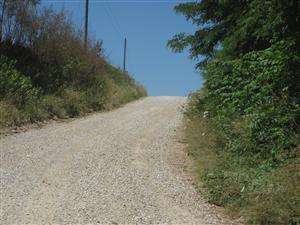
Directions: Because the area where Marmaduke deployed his initial defensive line is on private property, this tour stop [ Waypoint = N38 57.508 W92 39.813 ] is located on the Rocheport Road just south of the area where the initial defensive line was located in 1861.
- Before leaving the previous tour stop (Federal Line of Battle), take note how the Rocheport Road goes down into a ravine before rising up to another ridge about 0.3 miles to the west of this point. Marmaduke had set up his line of defense along this ridge.
- Now continue to drive west along Rocheport Road.
- After about 0.3 miles, find a safe place to pull to the side of the road.
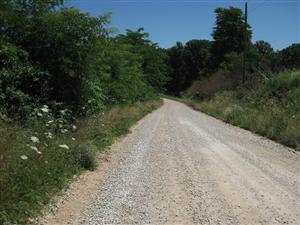 |
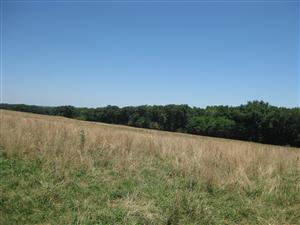 |
|
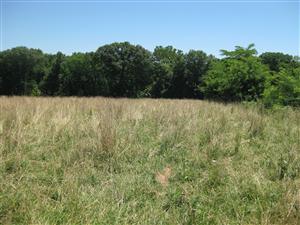 |
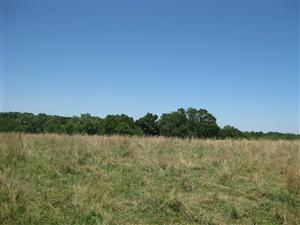 |
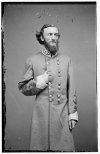
Description: You are standing in the approximate location where Missouri State Guard Colonel John S. Marmaduke established his defensive line. Look back to the east towards the previous tour stop to see where the Federals began to advance against this position. The State Guard defensive line followed a lane that went north from near here towards the river from the Rocheport Road. Although it no longer exists, the brick house of William M. Adams stood just east of the lane. It anchored Marmaduke's line as he had placed sharpshooters inside the house. The house would be a focus of the shelling by performed by Totten's Battery, taking several hits. [41]
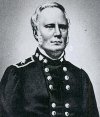
Before leaving, Missouri State Guard Major General Sterling Price had left orders for his forces to hold on in Boonville as long as possible. Price had been planning a delaying action in Boonville while he prepared for a more permanent defense at Lexington, Missouri. Colonel John S. Marmaduke, having graduated from West Point in 1857, argued that they should withdraw south to a more defensible location was along the Osage River between Warsaw and Osceola. [42]
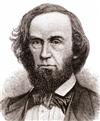
Upon hearing that the Federals were marching towards Boonville, Missouri Governor Claiborne Fox Jackson ordered his son-in-law, Colonel Marmaduke, to march his regiment out from Camp Bacon and stop Lyon from reaching Boonville. Although Marmaduke did not feel the area was defensible, he obeyed orders and sent out a skirmish line towards the approaching Federals. Marmaduke next deployed his troops in a lane running from Rocheport Road in the direction of the river, west of the Adams residence, on the north east corner of the junction of the two roads. Marmaduke anchored his defense line on the brick house owned by William M. Adams. Marmaduke put State Guard sharpshooters inside the brick house. Adamson describes what the Federals saw when they came upon Marmaduke's line of defense: [43]
“Scouts brought word that the enemy, in force, had placed himself on one of the terraces along a lane that crossed the river road. At the inland end of this terrace stood a grove of trees; and at the river end of the lane was a brick house. The trees and the house cold be sheltering artillery. In other words, the forces of Colonel Marmaduke had been well placed. They faced not only the river road, as it climbed from the bottom lands, but could subject it to enfilading fire from the grove and from the house on opposite ends of the terrace.”
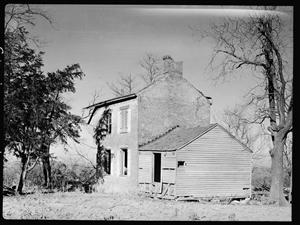 |
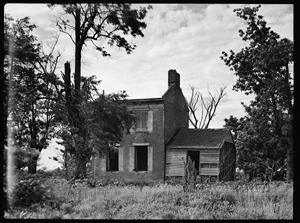 |
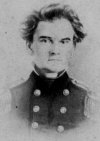
After the Federal artillery found the range to his positions, Colonel Marmaduke knew he could not hold out for long against the well-disciplined Federal troops. Marmaduke received word from Governor Jackson to fall back to Boonville so he could join forces with Brigadier-General Mosby Parsons, who was on his way to Boonville from Tipton, Missouri. This withdrawal began in an orderly fashion, but soon degraded into a full blown retreat with the poorly trained State Guardsmen fleeing. [44]
Back: Federal Line of Battle
Next: Camp Bacon
